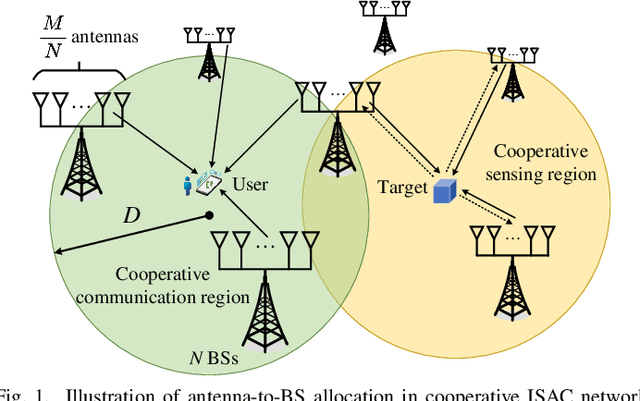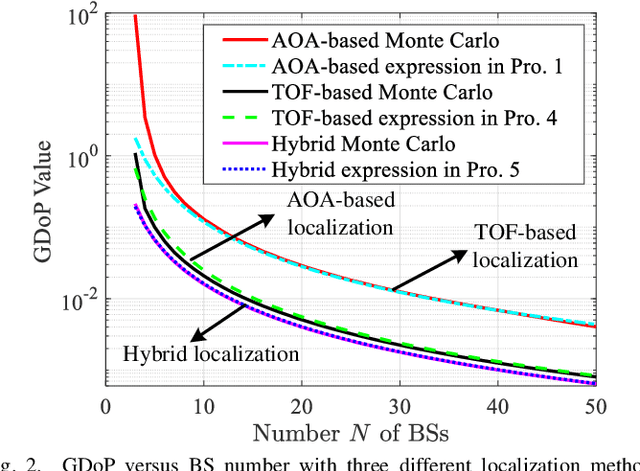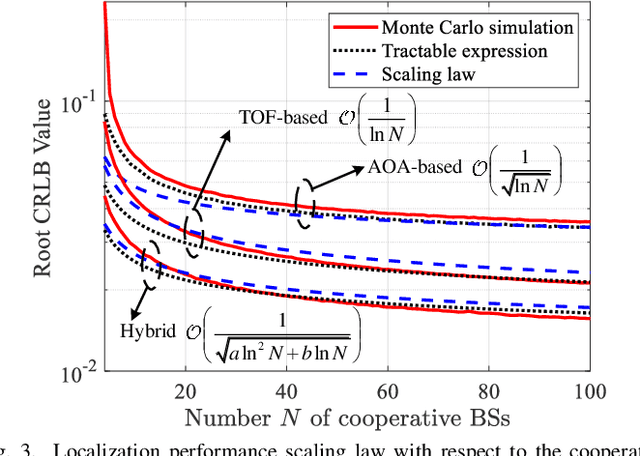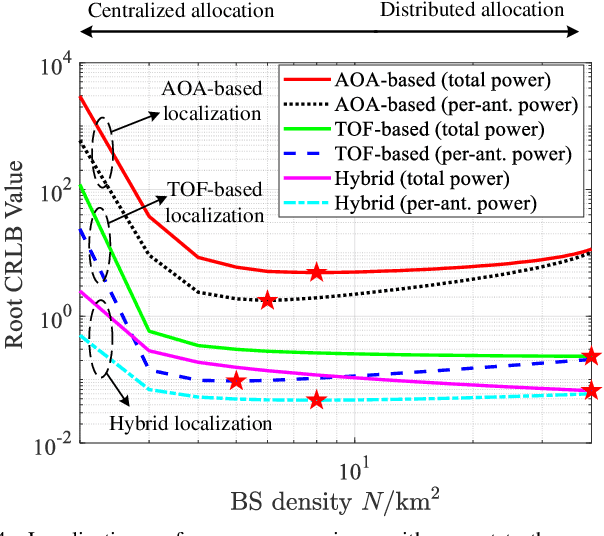Network-level ISAC: Performance Analysis and Optimal Antenna-to-BS Allocation
Paper and Code
Oct 08, 2024



A cooperative architecture is proposed for integrated sensing and communication (ISAC) networks, incorporating coordinated multi-point (CoMP) transmission along with multi-static sensing. We investigate how the allocation of antennas-to-base stations (BSs) affects cooperative sensing and cooperative communication performance. More explicitly, we balance the benefits of geographically concentrated antennas, which enhance beamforming and coherent processing, against those of geographically distributed antennas, which improve diversity and reduce service distances. Regarding sensing performance, we investigate three localization methods: angle-of-arrival (AOA)-based, time-of-flight (TOF)-based, and a hybrid approach combining both AOA and TOF measurements, for critically appraising their effects on ISAC network performance. Our analysis shows that in networks having N ISAC nodes following a Poisson point process, the localization accuracy of TOF-based methods follow a \ln^2 N scaling law (explicitly, the Cram\'er-Rao lower bound (CRLB) reduces with \ln^2 N). The AOA-based methods follow a \ln N scaling law, while the hybrid methods scale as a\ln^2 N + b\ln N, where a and b represent parameters related to TOF and AOA measurements, respectively. The difference between these scaling laws arises from the distinct ways in which measurement results are converted into the target location. In terms of communication performance, we derive a tractable expression for the communication data rate, considering various cooperative region sizes and antenna-to-BS allocation strategy. It is proved that higher path loss exponents favor distributed antenna allocation to reduce access distances, while lower exponents favor centralized antenna allocation to maximize beamforming gain.
 Add to Chrome
Add to Chrome Add to Firefox
Add to Firefox Add to Edge
Add to Edge